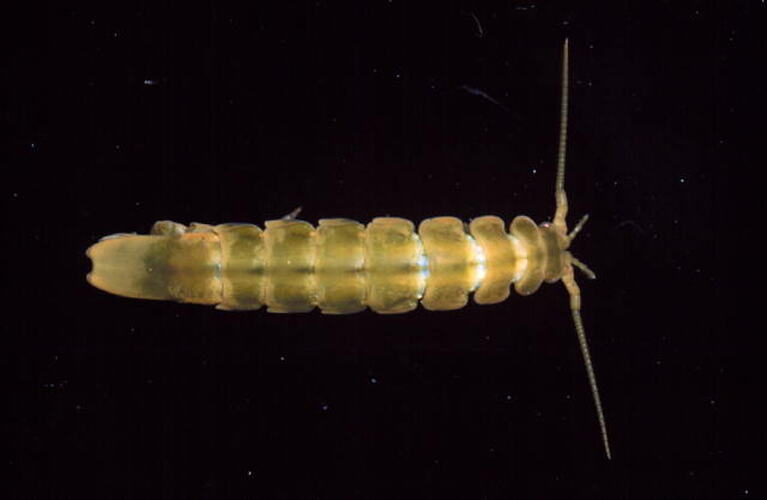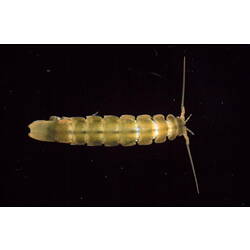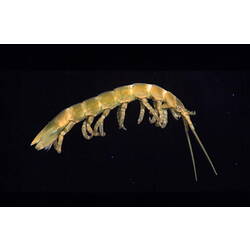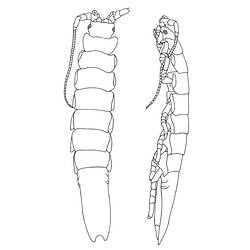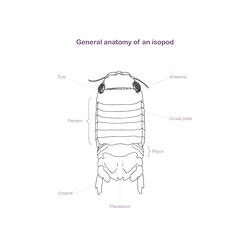General Description
Body about 5 times as long as wide. Head 1.8 times as wide as long, front slightly excavate medially. Dorsal coxal plates 5 and 6 reaching posterior margin of tergites (in oblique lateral view); dorsal coxal plate 7 acute and clearly exceeding posterior margin of tergite; pleotelson apical excavation almost as deep as wide (except in small individuals), posterolateral angles rounded. Body up to 3 cm long.
Biology
Paridotea munda is the commonest species of its genus in Victoria and South Australia and is most easily recognised by the excavate margin of the last segment (pleotelson). This species belongs to one of the few families of herbivorous isopods. It can camouflage itself according to the colour of the marine algae in which it lives.
Distribution
Southern Australia.
Habitat
Intertidal algae, to depths of 22 m.
More Information
-
Animal Type
-
Animal SubType
-
Brief Id
Body narrow, flattened, often coloured and with 7 pairs of legs. End of tailfan clearly excavate.
-
Maximum Size
3 cm
-
Habitats
-
Diet
Herbivore
-
Diet Categories
Seaweed, Algae
-
Endemicity
-
Commercial
No
-
Conservation Statuses
DSE Advisory List: Not listed, EPBC Act 1999: Not listed, IUCN Red List: Not listed
-
Depths
Shore (0-1 m), Shallow (1-30 m)
-
Water Column Locations
On or near seafloor
-
Taxon Name
-
Scientific Author
Hale, 1924
-
Common Name
Sea Centipede
-
Phylum
-
Subphylum
-
Superclass
-
Class
-
Subclass
-
Superorder
-
Order
-
Suborder
-
Family
-
Genus
-
Species Name
munda
